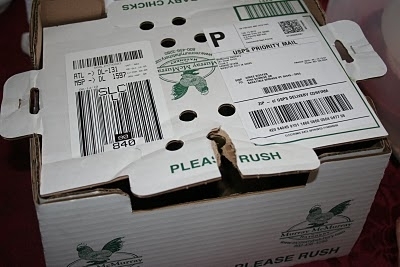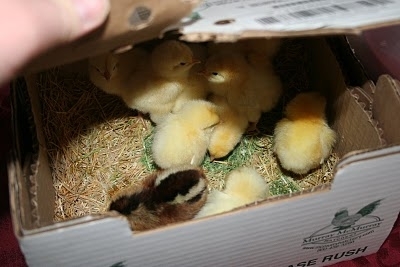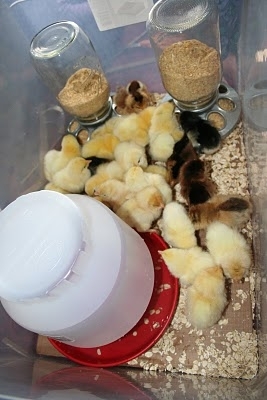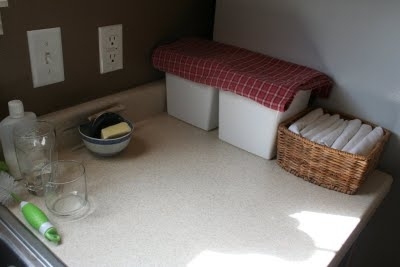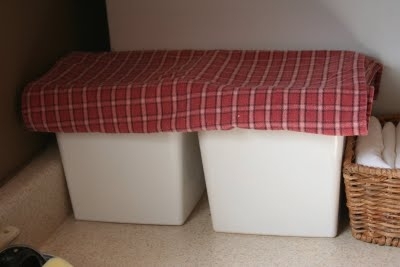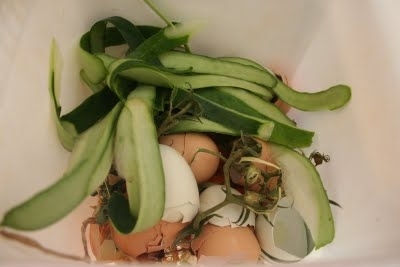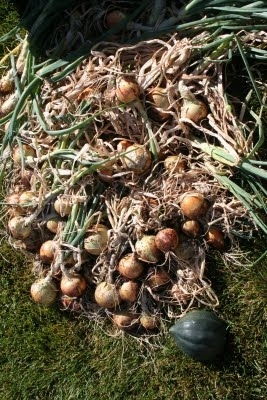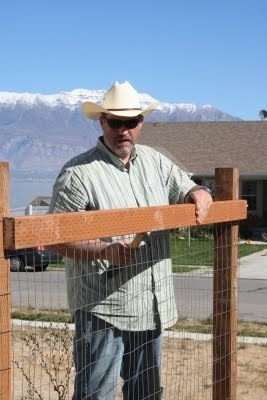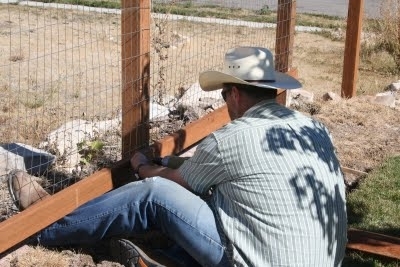Category Archives: the homestead
The Root Cellar…er…Basement
Anyway, until we move to a farm and I can get Dadzoo to build me a real root cellar my basement will have to do. Really it does quite well. My basement is only partially finished, there are two rooms, a bedroom and an office, then there is a big open unfinished space and this little room. Dadzoo walled this off very soon after we moved into this house and built some shelves. There have been times that this little room was pretty empty, however the last few years I have been stocking up. About two weeks ago Dadzoo went and bought me some more shelves and so now I feel like I can share what my root cellar is like, things aren’t piled all over the place anymore!
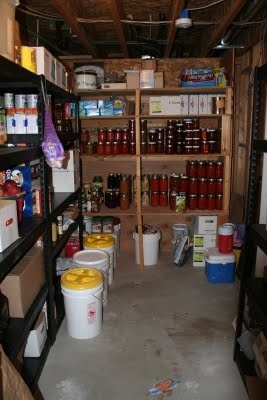 This is the view from one end of the room, facing the shelves Dadzoo built a long time ago, that is where I am keeping all my canning. Underneath I have buckets and boxes (the boxes hold #10 cans) of rice and beans. I don’t have nearly enough rice and bean stored, it is a work in progress.
This is the view from one end of the room, facing the shelves Dadzoo built a long time ago, that is where I am keeping all my canning. Underneath I have buckets and boxes (the boxes hold #10 cans) of rice and beans. I don’t have nearly enough rice and bean stored, it is a work in progress.
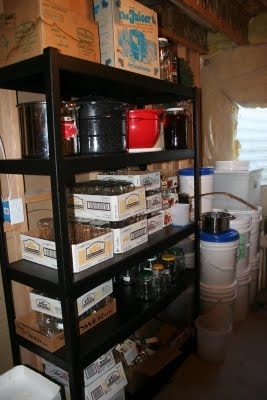
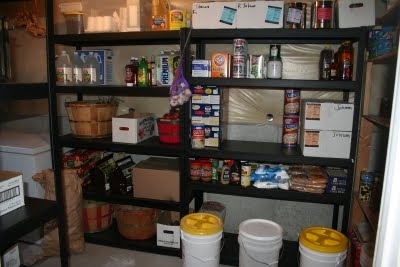 These shelves are directly across from the door. The shelves on the right hold baking items, oatmeal, some boxes of pasta on the top and the bottom shelf will hold bags of flour and sugar, I need to do some more stocking up of those, I have been a bit lazy lately. The buckets in front are for flour and sugar. After I open the bags I pour the contents in the buckets and that is what I use when I bake. The bucket in the middle is full of wheat, I use freshly ground wheat in my baking. The shelf on the left holds fresh produce, vinegar, a bin of candles and other misc items.
These shelves are directly across from the door. The shelves on the right hold baking items, oatmeal, some boxes of pasta on the top and the bottom shelf will hold bags of flour and sugar, I need to do some more stocking up of those, I have been a bit lazy lately. The buckets in front are for flour and sugar. After I open the bags I pour the contents in the buckets and that is what I use when I bake. The bucket in the middle is full of wheat, I use freshly ground wheat in my baking. The shelf on the left holds fresh produce, vinegar, a bin of candles and other misc items.
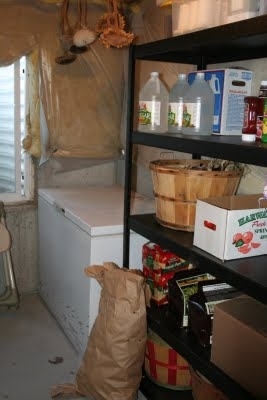
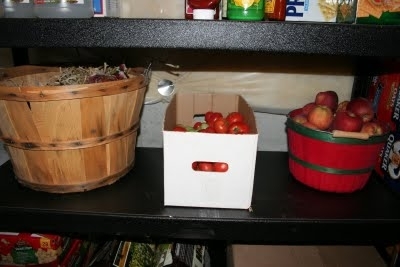 Here is a shelf that has a box of tomatoes slowly ripening, a basket of apples and the big bushel basket holds onions. Below I have another big box of tomatoes and 150 pounds of potatoes in bags and baskets.
Here is a shelf that has a box of tomatoes slowly ripening, a basket of apples and the big bushel basket holds onions. Below I have another big box of tomatoes and 150 pounds of potatoes in bags and baskets.
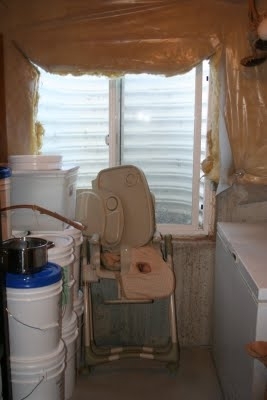 On the far wall is a widow. I love and hate this window. It makes for nice natural light, however that isn’t always a good thing when you are storing produce and you want it to go dormant. I need to cover it. I also keep it opened a crack all the time to let in the cold air. This room stays between 40 and 50 degrees in the winter, perfect for keeping potatoes.
On the far wall is a widow. I love and hate this window. It makes for nice natural light, however that isn’t always a good thing when you are storing produce and you want it to go dormant. I need to cover it. I also keep it opened a crack all the time to let in the cold air. This room stays between 40 and 50 degrees in the winter, perfect for keeping potatoes. 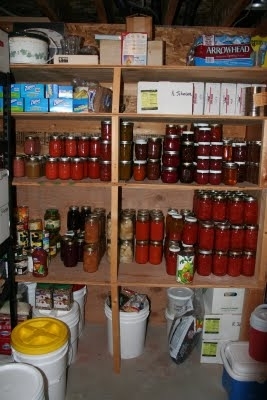 To the right of the door are my original shelves, they are nice and deep so I can store a lot there.
To the right of the door are my original shelves, they are nice and deep so I can store a lot there.
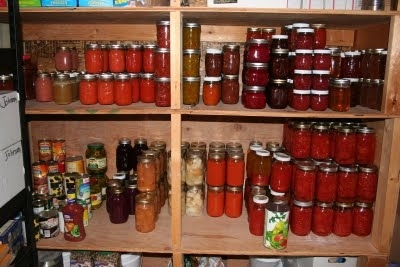
On the top shelf I keep all my pint jars. From right to left I have: Syrups, Jellies, Jam, Fruit Butters, Green Relish, Chili Sauce, Tomato Sauce, Tomato Soup, Chicken Broth, Apple Sauce and some Salsa.
On the bottle shelf I have my quart jars. From right to left: Stewed Tomatoes, Tomato Juice, Tomato Soup, Potatoes, Apples, Grape juice, and misc canned items (I hope someday to not have to purchase many canned items from the store.)
These shelves change as the year goes on, in the early winter I will can more potatoes and there will be more room because a lot of the tomatoes will have been used.
So there you have it, my root cellar. The biggest thing is to keep the room cool and dry.
Do you have a food storage room?
Composting Part II
There are many websites out there that give proper information on composting and will give you the ratios of different materials needed for optimum composting. When I read those I find my eyes glazing over and I go back to my lazy ways. I have had a few people ask me what I do, so I figured I would share, and expose myself for what I am: a lazy composter.
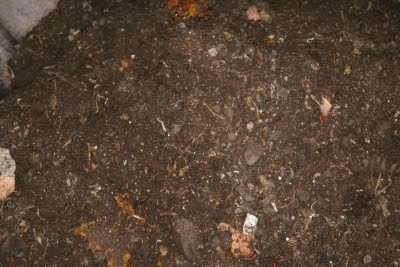
I only have one compost pile going. If I had more room there would be three: one for feeding, one for cooking and one for pulling. Right now I do all three in the same pile, and it works fine for me.
The first thing you need when starting a compost pile is a place to put it, it needs to sit and cook for weeks and months, so pick a place that is out of the way and will not be needed. Mine is right next to the shed and the chicken run.
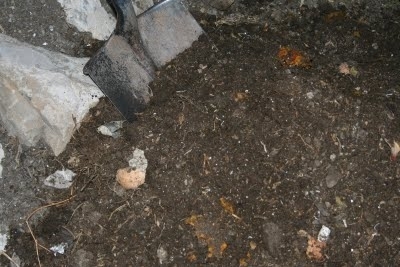
I put in fruit and vegetable scraps, paper (shredded, come and try to steal my identity….my bills are composting in chicken manure!), old bread, egg shells, leaves, garden waste, and animal manure. Egg shells will take sometime to break down, I try to break them up a bit when I am turning the pile. Eggs shells enrich the soil with calcium and other trace minerals, which will, in your garden, make your vegetables richer in minerals. If it isn’t in the soil it won’t be in your food.
I don’t put meats, weeds, cooked foods or woody plants in my compost. If you have a wood chipper or are willing to cut up woody plants and trimmings you can add them, they just take a long time to break down, so I don’t bother.
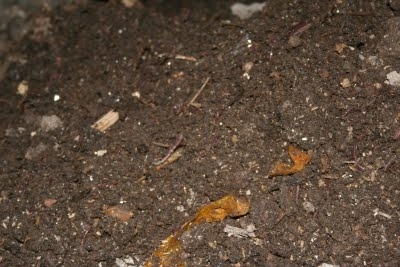 (can you see the worms?)
(can you see the worms?)Any kitchen scraps, including meats I give to the chickens. Then later I add the chicken dropping to the compost, that is a good way to make you food waste work for you.
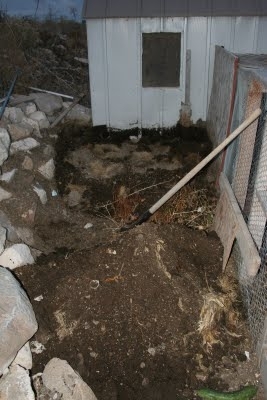 Depending on the time of year I work my pile differently. During the summer I add everything to the pile and cover it with compost. It then gets turned and watered weekly and everything breaks down very fast.
Depending on the time of year I work my pile differently. During the summer I add everything to the pile and cover it with compost. It then gets turned and watered weekly and everything breaks down very fast.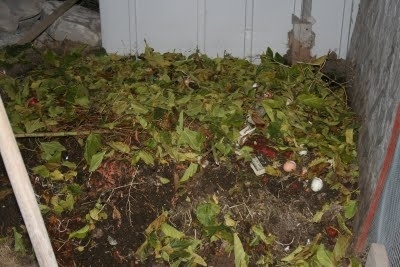
Then we started to layer. It doesn’t matter the order, but layering keeps things from rotting, if you have a whole bunch of vegetable matter in one spot it will rot and not compost. We started with a good layer of leaves.
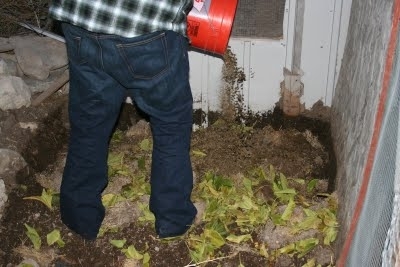
Then added a layer of rabbit manure.
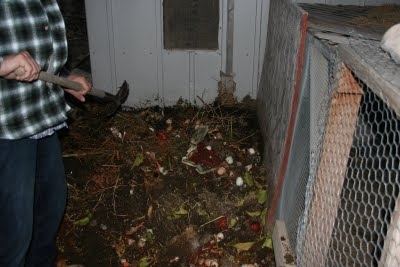 Then a layer of vegetable scraps, paper and egg shells.
Then a layer of vegetable scraps, paper and egg shells.
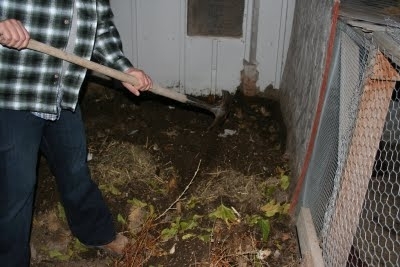 Then a nice thick layer of compost.
Then a nice thick layer of compost.
We repeated this process over and over until all the material was used.
We will let this sit, mostly undisturbed for the winter. The center will stay nice and warm and all the good organisms will be able to do their work.
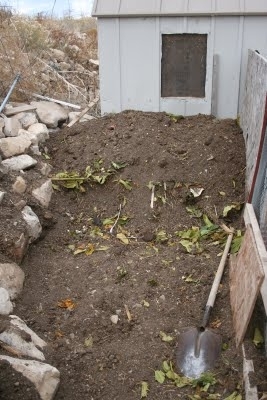 Here is a picture the next day. I will start piling my scraps to the side and cover with dirt, in the spring we will add them to the main pile.
Here is a picture the next day. I will start piling my scraps to the side and cover with dirt, in the spring we will add them to the main pile.
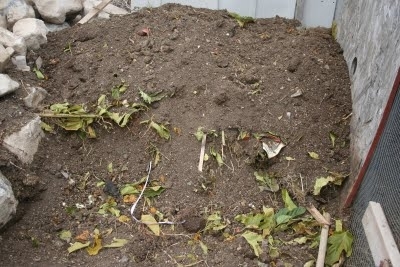 Worms are a great addition to any compost pile. We purchased ours at a local nursery, but you can get them on-line too. We got ours about 3 years ago and they are still going strong. When we first moved here you never saw a worm, ever, but now with the moving the wormy compost around I see them all the time. Worms in the soil indicate healthy soil. I love turning over a shovel full of compost and seeing it wiggly with worms!
Worms are a great addition to any compost pile. We purchased ours at a local nursery, but you can get them on-line too. We got ours about 3 years ago and they are still going strong. When we first moved here you never saw a worm, ever, but now with the moving the wormy compost around I see them all the time. Worms in the soil indicate healthy soil. I love turning over a shovel full of compost and seeing it wiggly with worms!While I can’t consider my garden organic, I have been known to use some pesticides, I would like to press upon you a very simple concept. While using basic fertilizers we can grow big plants. That doesn’t necessarily mean they are the most healthy or nutritious. Carrots may tend to have a lot of Vitamin A in them, but if there isn’t all the various macronutrients present in their environment they won’t produce as much or as high of quality. While I think there is a time and place for commercial fertilizers, in general I think it has made the quality of our food go down. If you truly want to provide superior produce for you family using compost is a must!
"My Work Space" or "Composting Part I"
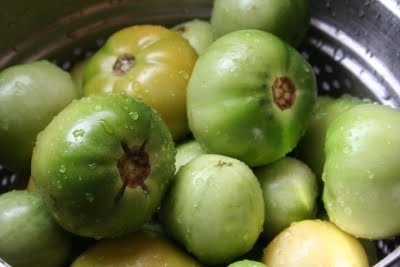
Right next to my kitchen sink I have two plastic bins that I use for my composting. One is for the compost pile and the other is for the chickens.
In the chicken bin I put all of out table scraps. Chicken are omnivores and will eat anything that we humans eat. They also eat and compost, in their own special way, foods that I don’t want in my pile; including meats, pasta and processed foods.
Work on the Homestead
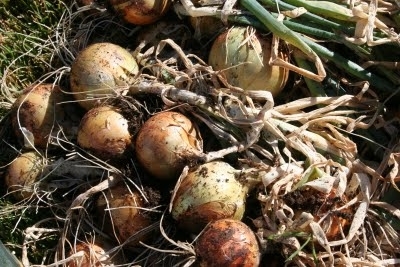
We are planning to plant raspberries and blackberries along the “fence” to create privacy and another source of food.

